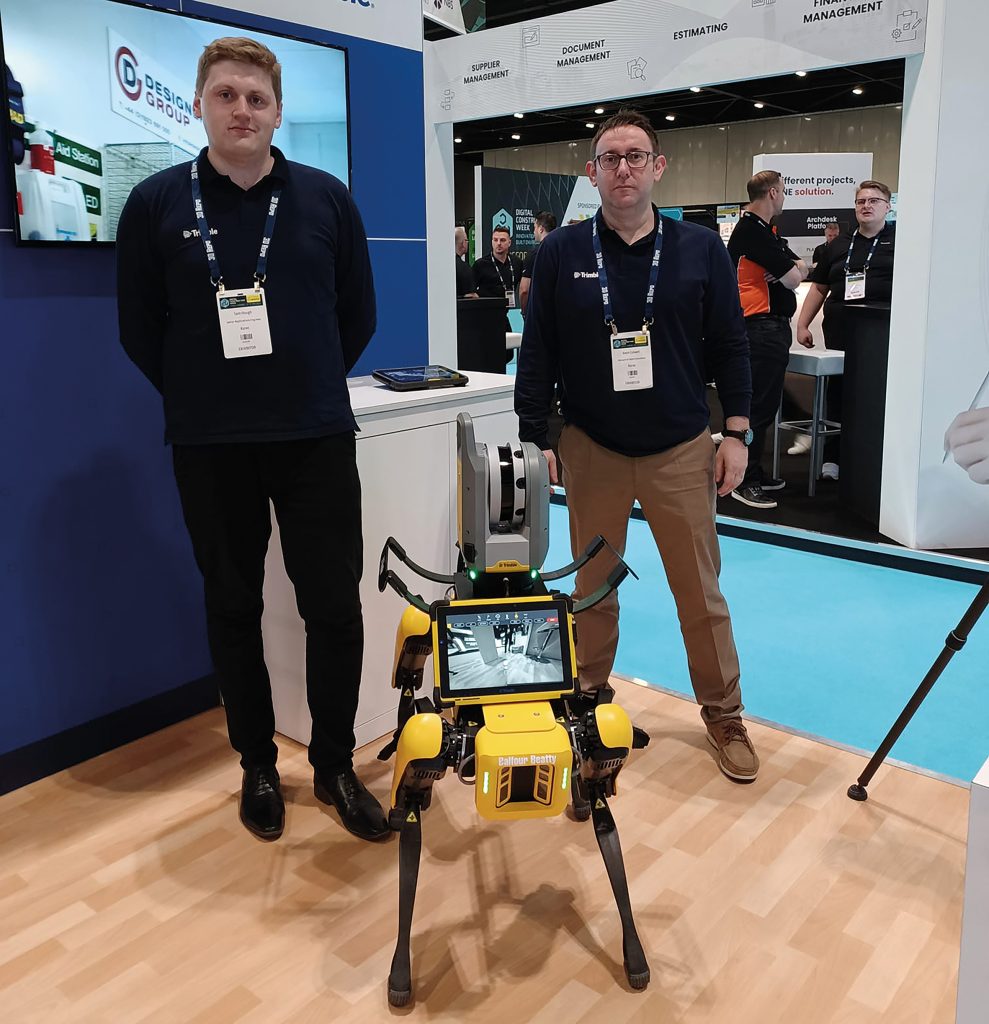Surely avoiding errors in the first place is a far more effective approach than being super-efficient at spotting them after they have occurred, but how? Could the solution lie with the subcontractors?
A few months back, my colleague Melvin Penwill MCInstCES shared an article challenging some of the reasons why laser scanning is not used more in construction. Whilst laser scanning certainly has its place in construction, personally I believe that it should be used as a final verification of ‘we’ve constructed as expected and within our tolerances, and here’s a record of that to aid in our compliance with the building safety act’, rather than a tool to spot errors AFTER they have occurred. Here’s why:
Calling all subcontractors…
BuildingPoint UK and Ireland joined the Get it Right Initiative (GIRI)earlier in the year, and since then it has become apparent to me that for the most part subcontractors aren’t represented; surely subcontractors are those that potentially make the most errors during a project’s construction phase?
As an industry, I would argue that we’re more focused on assigning blame when errors occur than on challenging the “we’ve always done it this way” mindset in our trade processes.
With very little ‘wiggle room’ in modern construction projects both financially and in relation to time constraints for project delivery, how many main contractors have taken a step back and thought “How could we change the site processes of our trades; in a similar fashion to how we have changed our office processes for compliance?”.
In a recent study, XYZ Reality identified that “64% of construction companies polled say they encounter error and rework on their projects at least twice a week.”
Five ways digital measurement and the total station can assist subcontractors
Total stations are widely adopted by site engineers across the country, with thousands being used every single day on our construction projects. They’re the best tool in the toolbox to ensure construction is completed to required (ever tightening) tolerances, but when it comes to the superstructure, how often are they being used?
In my honest opinion, in view of what they can bring to a project compared to manual methods, not often enough!
I can easily think of at least five distinct ways digital technology can support subcontractors—and I’m sure there are plenty more. Let’s begin with the most significant ones:
- A digital workflow enables trades (MEP, Drylining, etc.) to use the 3D model, issued via CDEs (Common Data Environments) such as Viewpoint, rather than the PDF print out. I visit many sites across the country and PDF print outs remain common. In one recent instance, we were on a site in central London and the site team there queried the accuracy of a total station we’d supplied on trial. Upon inspection by one of our technical support team, they found that the PDF they were using was three revisions behind the model they were issued, and they didn’t even know!
- The UK Building Safety Act, particularly with its recent ‘Golden Thread*’ requirements, aims to reduce errors from subcontractors by mandating a clear, detailed record of building information throughout its lifecycle. The Golden Thread is a digital, easily accessible, and up-to-date account of all essential safety information—design, construction, and maintenance data—which must be maintained accurately and transparently. How can this be done effectively? A good solution is to use a total station and Trimble FieldPoints for Revit plugin, as this will provide an accurate and transparent 3D record of deviation from design, with revision clouds appearing where tolerances are exceeded. Consequently, the Golden Thread fosters a culture of accountability, precision, and proactive error-prevention among subcontractors.
- One of the goals of GIRI is to achieve a “working culture that gets it right from the start”. We can move closer towards this goal by ensuring the data used by the site team is of the correct revision (by using Trimble Connect and Viewpoint for Projects), is checked for coordination (using Trimble Connect’s ‘clash set’ tools) and is marked out on site accurately using Trimble hardware. (You can read a great example of this in one of our recent case studies here.)
- Effective digital data ensures that you have an exact record of your work. No matter how many years later, you can prove you’ve installed correctly as per design. With our plugins to Revit, SketchUp and Trimble Tekla, you have a date and time stamp record of exactly what’s done and when. Whilst this doesn’t necessarily avoid errors by sub-contractors, it can provide ‘peace of mind’ that they installed as per the information provided at the time of construction, a vital back up if their work is brought into question later.
- And finally, we arrive where Melvin begins – laser scanning as a final check and sign off that “yep, we’ve constructed as per design and here’s our proof”.

Most common objections
I recognise that objections are not only natural but essential for understanding the daily challenges our construction clients face. However, these objections also highlight underlying factors contributing to the lack of growth in construction productivity. Did you know that US sectors, including agriculture and manufacturing, have increased productivity 10 to 15 times since the 1950s, but the productivity of construction remains stuck at the same level as 80 years ago! (Please read my previous newsletter on this subject)
Here are some of the objections I hear most frequently:
“I can do it just as fine without technology”
I’ve seen enough saggy tape measurements taken off a structure that may or may not be correct to know that this is simply not true if you wish to avoid errors. Manual methods can’t compete with the 1mm provided by a total station and nor will will they bring the additional benefit or being able to provide a file which imports directly into Revit or other design software that shows position deviation above a certain magnitude.
“We’ve always done it this way; my business has survived so why would I change?”
The businesses we work with aren’t just aiming to survive; they seek to outpace competitors, take on larger projects, and drive growth. I believe these companies will set a standard that will leave behind those unable to match their level of service.
“I’d love to use it, but It’s not in my contract. I asked our client if I was able to submit a variation for it, but the main contractor says ‘no’ due to tight budgets.”
This is an interesting objection and one that underlines how important it is for main contractors to support their trades to do things differently and adopt new technology. We have seen success here when contractors have MANDATED it being used in contract stage, before bid and award, as they see the benefits of asking their sub-contractors to do this.
For example, Canary Wharf Contractors, a main contractor, enabled their subcontractors by removing the capital investment blocker by funding the hardware themselves but stipulated in the contract that their trades must use the hardware, and all the trades needed to do was pay for a training day or two – that simple. End result –the main contractor reaps the reward, as does the sub-contractor.
“It’s a significant capital investment, I need to try to split the cost over multiple contracts”
There are two key points here. Firstly, the benefits speak for themselves and we see this very much in evidence with the customers who have moved into digital measurement such as Derry Building Services (read the case study here), who reported a 400% increase in productivity for setting out fan coil units on a recent project.
Secondly, we appreciate that for some a large capital investment is not always possible which is why we offer a hire service for Trimble solutions such as the Trimble Ri Robotic Total Station. We also have a fantastic finance partner in UNITED ASSET FINANCE LIMITED (Robert Harper). In short, access to the technology has never been easier.
…and in conclusion
Substructure has site engineers, so why are we not empowering trades to use the same tech when the internal components of the superstructure are being installed? Technology isn’t a threat and it’s important to note that it won’t replace you or your best workers although it will change the way you work with multiple benefits.
However, my message is a strong one, ‘evolve or die’.

So, does the evidence stack up and would you like to know about how to begin the digital transformation? If so, contact me with a message or call me on 07870892280 and we can pop out and show you exactly how the technology can be used in your particular area, with the full support of our team, who have most definitely ‘been there and done that’. I think a great starting point would be the rental of a Trimble Ri Robotic Total Station.
If not, I’ll leave you with a few quotes from customers who we have recently worked with to introduce digital workflows into their practices.
“In my opinion, the system has over delivered and I’m looking forward to implementing it on future projects. A job that would have taken 116 days to mark out manually could now be undertaken with the new Trimble Ri workflow in just 6 days. We also saved 110 days working at height.” Steven Mann, Mechanical Project Engineer, Derry Building Services Martin Bell Bell Ventilation Services Ltd.

“We estimate that the new RPT600 workflow has delivered a reduction in rework of about 30%. In an industry where correction for Building Standards can cost millions, this is significant.” Jamie McCann, Managing Director, AV Unibrak
“We are involved in a lot of complex projects and the new workflow is enabling us to spot potential clashes or misalignments pre-site.” Richard Walsh, Director, O’Dwyer Steel
Please do post your comments – your opinion is vital to us getting it right.











